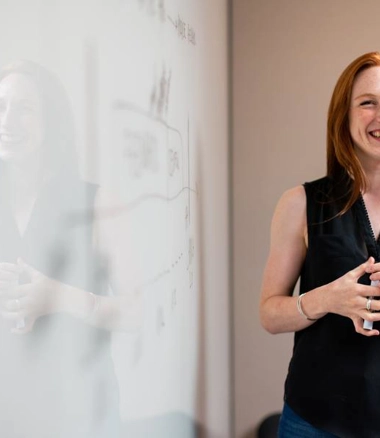
Over the past few years, more architecture and interior design professionals in Australia have started exploring the idea of "portfolio careers" – combining freelance consulting, contract roles, advisory work, and short-term project engagements rather than pursuing traditional permanent employment.
According to LinkedIn’s Global Talent Trends 2025 report, flexible and project-based hiring has increased by 38% across design-related sectors in Australia and New Zealand.
At first glance, the appeal is obvious. Portfolio careers promise greater autonomy, broader exposure to different types of work, and the ability to control your own professional destiny.
But is it really the smartest move, especially today, when traditional roles have become far more flexible and rewarding?
Here’s a closer, more critical look.
Why Portfolio Careers Are Gaining Attention
It’s not surprising that architecture and design professionals with 10–15 years of experience might be drawn to the idea of going independent.
Several trends are driving the conversation:
- Control over Project Choice: Many professionals feel stifled working on projects that don’t align with their design philosophy or values. Portfolio careers offer the promise of choosing engagements that excite them.
- Flexibility: Freelance and contract arrangements allow greater control over when and where you work, appealing to professionals balancing family, study, or personal projects.
- Escape from Corporate Politics: A common frustration within large studios and firms is the growing layer of bureaucracy and internal competition. Independence seems like a way to avoid it.
- Diversified Income Streams: For some, consulting and advisory work provides the opportunity to combine different types of work, design, mentoring, expert reviews, into one career.
In a 2024 Hays survey of design professionals, 41% said they had considered moving into freelance or portfolio work within the next two years.
The appetite is real.
But so are the risks.
The Hidden Downsides of Going Fully Independent
For all the surface-level appeal, portfolio careers carry serious challenges that professionals sometimes underestimate.
- Income Instability
Without the cushion of a permanent salary, architects and designers face the pressure of constantly generating new work.
Australia’s 2025 Freelance Workforce Report found that 52% of independent professionals cited "uncertain income streams" as their biggest stressor.
You might secure three strong contracts one year, and scramble for viable work the next.
- Isolation and Lack of Support
When you leave a firm, you leave behind more than just a job.
You lose access to teams, mentors, resourcing support, administrative infrastructure, marketing resources, and sometimes even professional networks.
Over time, working alone can limit your exposure to new ideas, techniques, and collaboration opportunities, all of which are critical to growing as a design professional.
- Career Drift
Without a clear plan, portfolio careers can scatter your skills across different sectors and project types without building a coherent body of work.
Clients may hesitate to engage you for major leadership roles if your experience looks fragmented rather than cumulative.
- Hidden Administrative Burden
Freelance life means running your own marketing, bookkeeping, legal compliance, insurance, and client management.
The administrative load can consume a significant portion of your available working time, often without compensation.
Why Permanent Careers Look Very Different in 2025
One of the biggest myths in architecture and design today is that traditional employment still means rigid hours, fixed locations, and narrow project types.
That model is disappearing.
Today’s permanent roles increasingly offer:
- Flexible Work Structures: According to the Property Council of Australia’s 2025 Workplace Survey, 67% of firms now offer hybrid or remote working options for design and technical teams.
- Project-Based Teaming: Many studios build flexible project teams internally, allowing staff to move between sectors (e.g., from residential to hospitality to mixed-use developments) over the course of their careers.
- Creative Autonomy: Senior professionals often have greater say in project selection, conceptual direction, and design language within firms than they did even five years ago.
- Career Stability and Development: Structured pathways for CPD (Continued Professional Development), mentorship, and leadership opportunities are now common, particularly in mid-sized and larger firms.
In other words:
The old rigid studio model has evolved.
Staying employed no longer means sacrificing flexibility, autonomy, or creativity, and it delivers the added benefits of stability, support, and career progression.
The Hybrid Solution: Strategic Flexibility Without the Risk
Professionals don’t have to choose between being trapped in rigid firms or going fully independent and exposed.
Partnering with a specialist recruiter focused on architecture and interior design allows you to:
- Access Flexibly Structured Roles: Many forward-thinking firms now create fixed-term contracts, secondments, or project-specific roles that offer project diversity without losing employee benefits.
- Secure a Stable Work Pipeline: Rather than chasing your own work, a recruiter can present curated opportunities aligned with your goals and design philosophy.
- Retain Creative Autonomy: You can still select projects that align with your interests, but with the backing of contracts, negotiated terms, and market insights you wouldn't have solo.
- Protect Your Professional Brand:
Specialist recruiters help position you for strategic career growth, not just for short-term gigs.
Reflection Questions
Before deciding to pivot toward a portfolio career, it might be worth asking:
- Is it project autonomy I’m seeking, or simply better project fit within a flexible permanent environment?
- Am I prepared to manage the financial, administrative, and marketing demands of full independence, not just the design work?
- Would a well-negotiated flexible role inside a respected firm give me 90% of what I want, without 90% of the risk?
The answers are rarely simple.
But the consequences of misjudging them can be significant.
Final Takeaway
Portfolio careers offer autonomy, but not always on your own terms.
Today’s flexible permanent roles increasingly provide the creative freedom, project variety, and work-life balance professionals once thought only freelancing could deliver.
You don't have to choose between growth and freedom.
You can have both, if you structure your career strategically.
A specialist recruiter who understands your sector, your ambitions, and the evolving market can be your best partner in building a career that’s flexible, fulfilling, and future-proof, without the hidden risks of going it alone.





